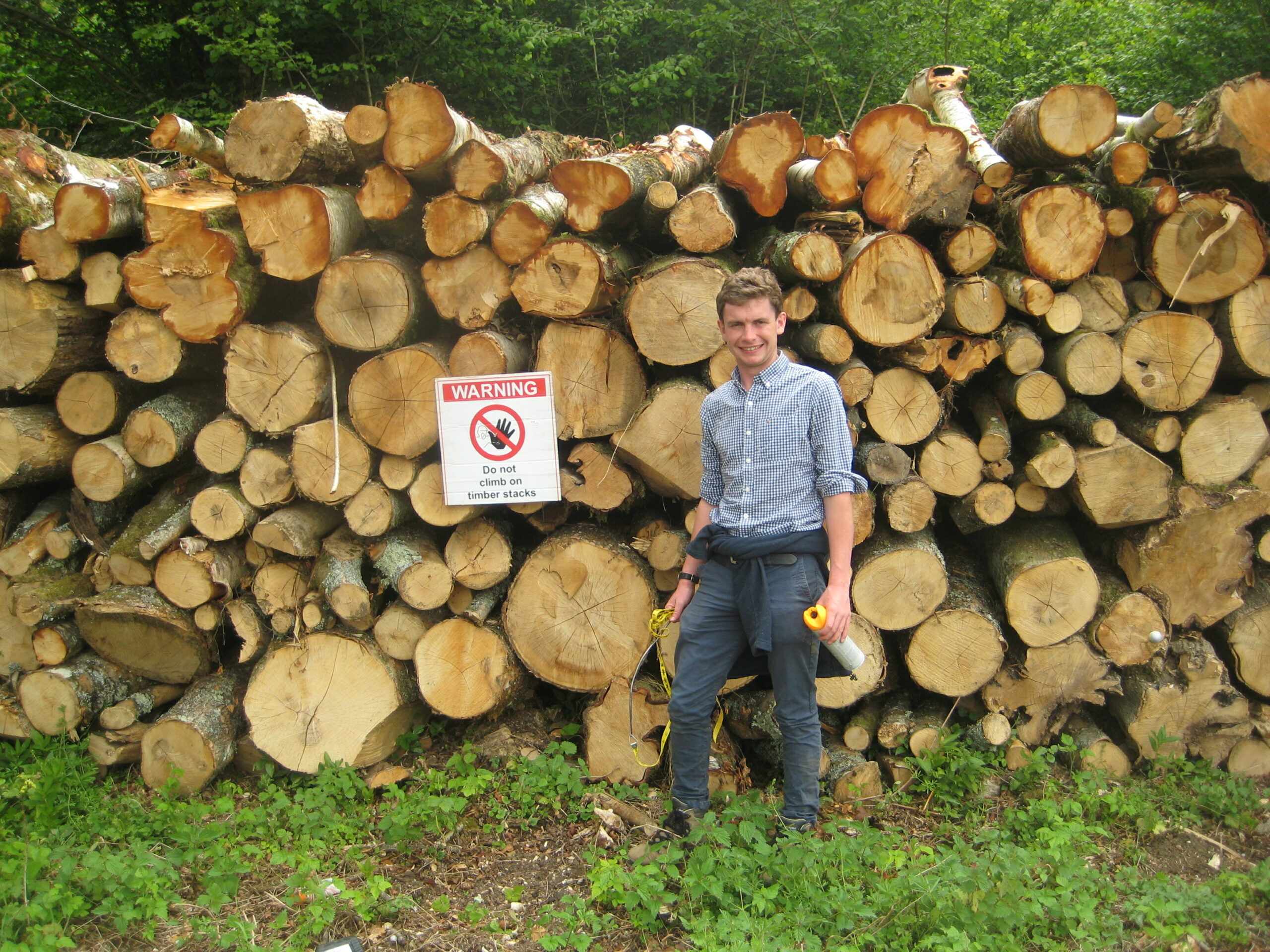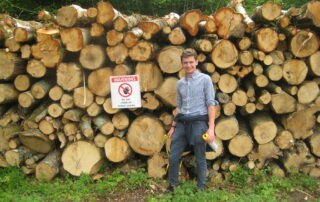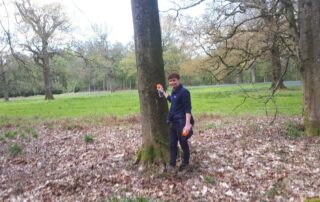Patsy Wood Scholarship / 2nd Blog / 27.06.22
A blog by Peter Borrowman, Patsy Wood Scholar.
Introduction to the forestry sector
Since my last update in the early spring, it’s been all hands to the pump in getting to grips with a range of tasks including organising new planting and beat ups, finishing the last of the marking for thinnings, timber mensuration (both standing and roadside), management plans and grant applications to mention but a few. It has certainly been a whirlwind introduction to working in the forestry sector!
Multi-Purpose Forestry
A large part of the spring was spent tackling the last of our Countryside Stewardship applications, to which I greatly underestimated the required workload, with mapping and spreadsheets galore! If accepted, all the hard work will have been worth it as we will be provided with long-term funding in order to undertake a range of operations associated with further improving the environmental health of the woodlands – “public money for public benefits”. Coppicing, ride and open ground management, deer and squirrel control and regenerative felling are all examples of activities which are not necessarily economically productive, but critical to maintaining the biodiversity, historic environment conservation and landscape character of the woodlands, thus enabling us to truly conduct multi-purpose forestry. We just about managed to fit in all of our prescribed planting for the year, despite the best efforts of rain and covid! I’m now in the process of calculating tree numbers and species for the coming season (always making sure to ask for improved material from the nurseries wherever possible!).
A Learning Curve
We have also been creating new management plans for clients as well as implementing work programmes for existing plans. For example, we have recently undertaken a thinning operation of broadleaved woodland which is principally Oak, with some birch and ash alongside a predominantly hazel understory. We marked the stand, aiming to remove the poorer quality oak and birch in order to provide the client with a financial return, allow additional light and nutrient resources to promote growth in the better trees and improve the structural diversity of the woodland. With the logs having been cut and extracted, we then measured their individual lengths, thus allowing us to calculate the Hoppus volume of logs using a Hoppus girth tape, and are now in the process of putting the parcel out to tender. It was a real learning curve to see the process from start to finish and understand the practicalities of both harvesting and subsequently selling timber.
Forestry Training Opportunities
I must mention how appreciative I am for all the additional training opportunities provided through the Patsy Wood scholarship. I have recently attended programmes focused on deer management and protected species, with further days on soils and species selection to follow. I feel very privileged to have been given such an opportunity to develop my knowledge and expertise to get a foothold in the forestry sector! I also had the opportunity to attend a Royal Forestry Society visit at Great Yews (a truly fascinating site!) and an early career professionals study tour in North Wales with the Institute of Chartered Foresters. Such opportunities were invaluable for myself in terms of networking opportunities with other younger generation foresters and learning from the wiser heads amongst the industry (of which there are many!). It was also a pleasure to attend the Future Trees Trust supporter’s day at Vastern Sawmill, with an array of highly informative speakers and attendees. For me, being at Vastern Timber highlighted the requirement to spread awareness throughout the industry, in terms of the need to utilise improved seed material in order to produce the highest quality timber which is capable of providing a profitable crop and enhancing long-term carbon lock up. The increasing influence of the FTT is therefore a great sign for the forestry sector going forward.
Having now been in the role for 6 months, I think it’s fairly safe to say that I’m thoroughly enjoying my time working with William and the Future Trees Trust. Whilst I still have a lot of learn in the coming months, I feel that I am beginning to make large strides as a prospective forester. For those considering the forestry sector as a potential career path, I would have nothing but positives from my initial time of working in the industry.
Peter Borrowman
Patsy Wood Scholarship Update by Forestry Technician Ruaridh Phillips
My time working as this year’s Patsy Wood Scholar so [...]
Peter Borrowman: My 2 Years on the Future Forester ‘Patsy Wood Scholarship’
by Peter Borrowman, Patsy Wood Scholar Introduction Coming up [...]
Future Forester, Patsy Wood Scholarship Year 2
Patsy Wood Scholarship – Year 2 spring update A [...]





Leave A Comment